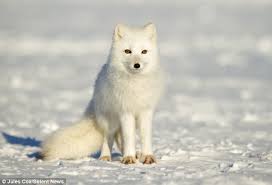In the coldest parts of the world, insulation is essential for survival.
One way is to have a good thick layer of blubber under your skin. But anyone that’s seen a walrus flopping across the beach knows that fat can have its downsides. To stay both warm and agile, fat won’t do.
The Arctic fox can withstand polar winters, surviving long periods below -20 °C (-4 °F), thanks to some incredible adaptations.
One of the most distinctive is its fluffy coat, which changes colour from brown to white and grows longer for the bleakest season. In certain areas it can double in length; on its underside the longer fur helps insulate the fox from the cold ground when it sits or lies down and even the soles of its feet are furry.
When it curls into a ball, nose tucked under its tail, only the thickest fur is exposed to the elements.
“The winter-time coat ranges between 45-60mm [long], but offers a very high thermal insulation compared to its length,” says Stephen .
Air is a good insulator because it’s not very dense, so heat only moves through it slowly
“Altogether the arctic fox can tolerate very low temperatures of -70 °C. It always surprises you just how thin they really are when you pick them up and all the fur compresses against their little bodies.”
The reason this coat can protect the fox from such extreme cold, despite being only a few inches thick, is down to its structure.
Beneath the longer outer hairs is a softer, denser layer that accounts for 70% of the fur. This traps a layer of air next to the skin. Air is a good insulator because it’s not very dense, so heat only moves through it slowly.
Source :BBC
N.H.Khider

